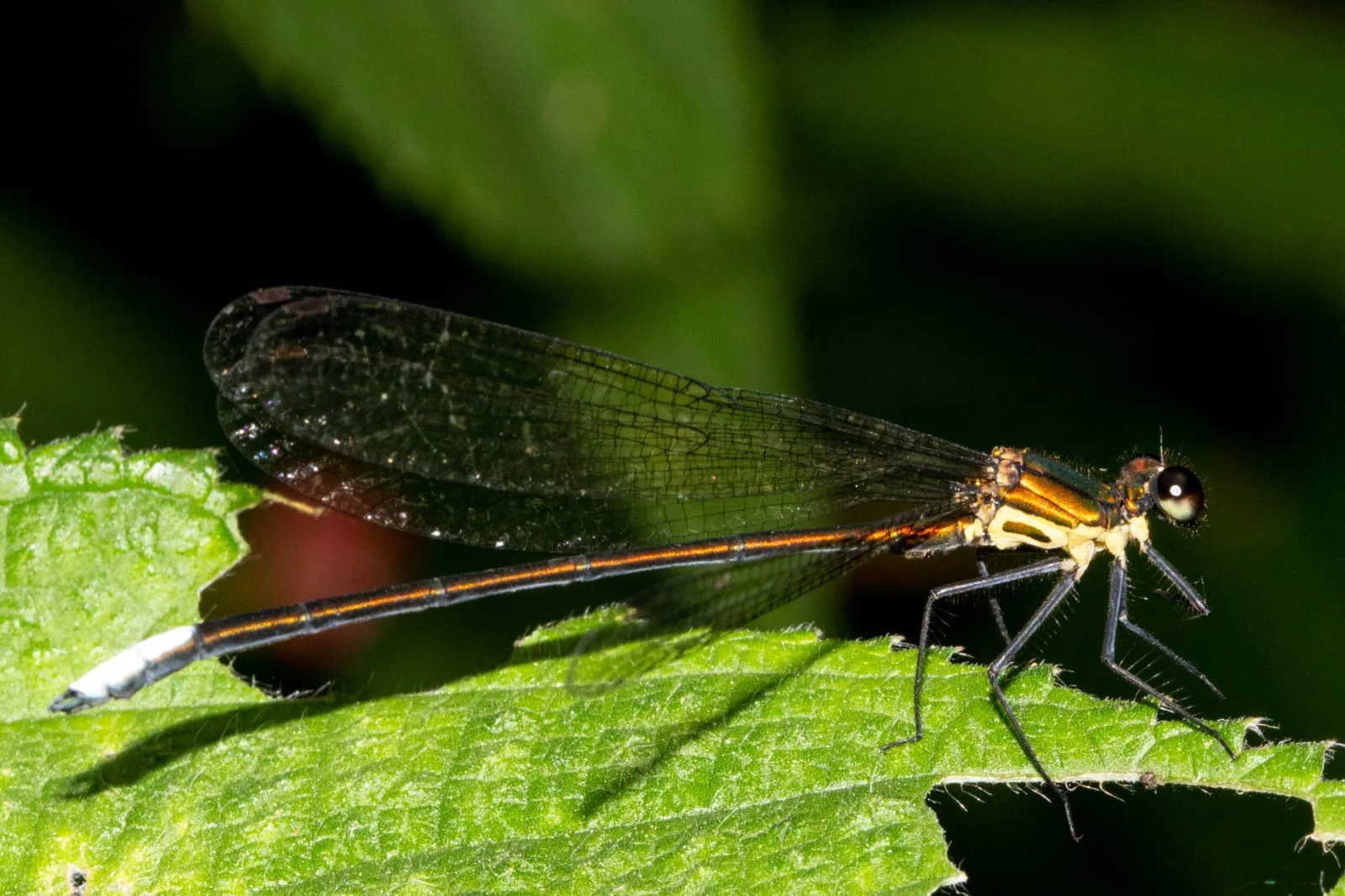- Courses
- GS Full Course 1 Year
- GS Full Course 2 Year
- GS Full Course 3 Year
- GS Full Course Till Selection
- Online Program
- GS Recorded Course
- NCERT (Recorded 500+ Hours)
- Polity Recorded Course
- Geography Recorded Course
- Economy Recorded Course
- AMAC Recorded Course
- Modern India, Post Independence & World History
- Environment Recoded Course
- Governance Recoded Course
- Science & Tech. Recoded Course
- International Relations and Internal Security Recorded Course
- Disaster Management Module Course
- Ethics Recoded Course
- Essay Recoded Course
- Current Affairs Recoded Course
- CSAT
- 5 LAYERED ARJUNA Mentorship
- Public Administration Optional
- ABOUT US
- OUR TOPPERS
- TEST SERIES
- FREE STUDY MATERIAL
- VIDEOS
- CONTACT US
PLACES IN NEWS 25th DECEMBER 2024
PLACES IN NEWS 25th DECEMBER 2024
25-12-2024

Sagar Island
Why in news?
Sagar Island in West Bengal, home to the Gangasagar Mela, faces severe climate change impacts, with rising sea levels eroding the coastline.
The Bay of Bengal now lies just 450 meters from the iconic Kapil Muni Temple, threatening its existence.
About Sagar Island:
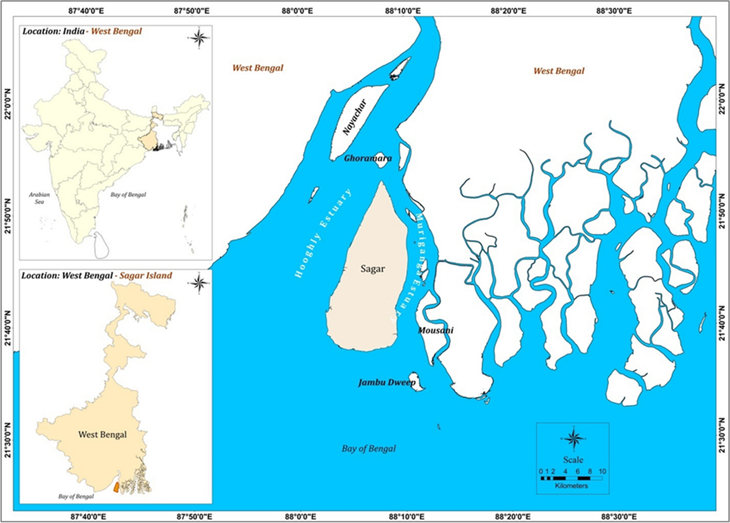
- Sagar Island, located on the southern fringe of West Bengal, is the largest inhabited estuarine island of the Sundarbans delta.
- It lies at the confluence of the Hooghly River and the Bay of Bengal, serving as a critical geographical and ecological zone.
- The island features diverse landscapes, including mangroves, estuaries, and sandy beaches, which play vital roles in regional biodiversity and coastal defence.
- The island faces severe impacts of climate change, with rising sea levels eroding its coastline and reducing landmass.
- According to studies, the sea has advanced significantly, now just 450 meters from the Kapil Muni Temple. The erosion has displaced communities, destroyed livelihoods, and increased vulnerability to cyclones and storm surges.
- Experts attribute this to both climate change and unchecked development that has destroyed natural sand dunes acting as barriers against erosion.
About Gangasagar Mela and Kapil Muni Temple:
- The Gangasagar Mela, held annually in January on Sagar Island, is one of the largest religious congregations in India, drawing millions of pilgrims from across the country.
- Devotees gather to take a holy dip at the confluence of the Ganga and Bay of Bengal, believing it cleanses sins and grants salvation. This mela is second only to the Kumbh Mela in terms of cultural and religious significance, fostering a sense of spirituality and unity among participants.
- The Kapil Muni Temple, a revered shrine on the island, is central to the Gangasagar pilgrimage.
- It is dedicated to Kapil Muni, a sage from Hindu mythology, believed to have achieved enlightenment here. The temple is a symbol of devotion and spiritual tranquillity. Pilgrims visit the temple to offer prayers and seek blessings, especially during the Gangasagar Mela.
- Rising sea levels and coastal erosion pose a grave threat to both the mela and the temple. The area for holy dips has significantly reduced, creating logistical challenges for the administration and inconvenience for pilgrims. Despite efforts to mitigate the crisis, the temple's proximity to the advancing sea raises concerns about its survival in the coming years.
Rwanda
Why in news?
- Rwanda successfully managed its first Marburg Virus Disease (MVD) outbreak, declared over on December 20, 2024, after a 42-day countdown with no new cases. The outbreak, confirmed on September 27, recorded 66 cases and 15 deaths (fatality rate 22.7%).
About Rwanda:
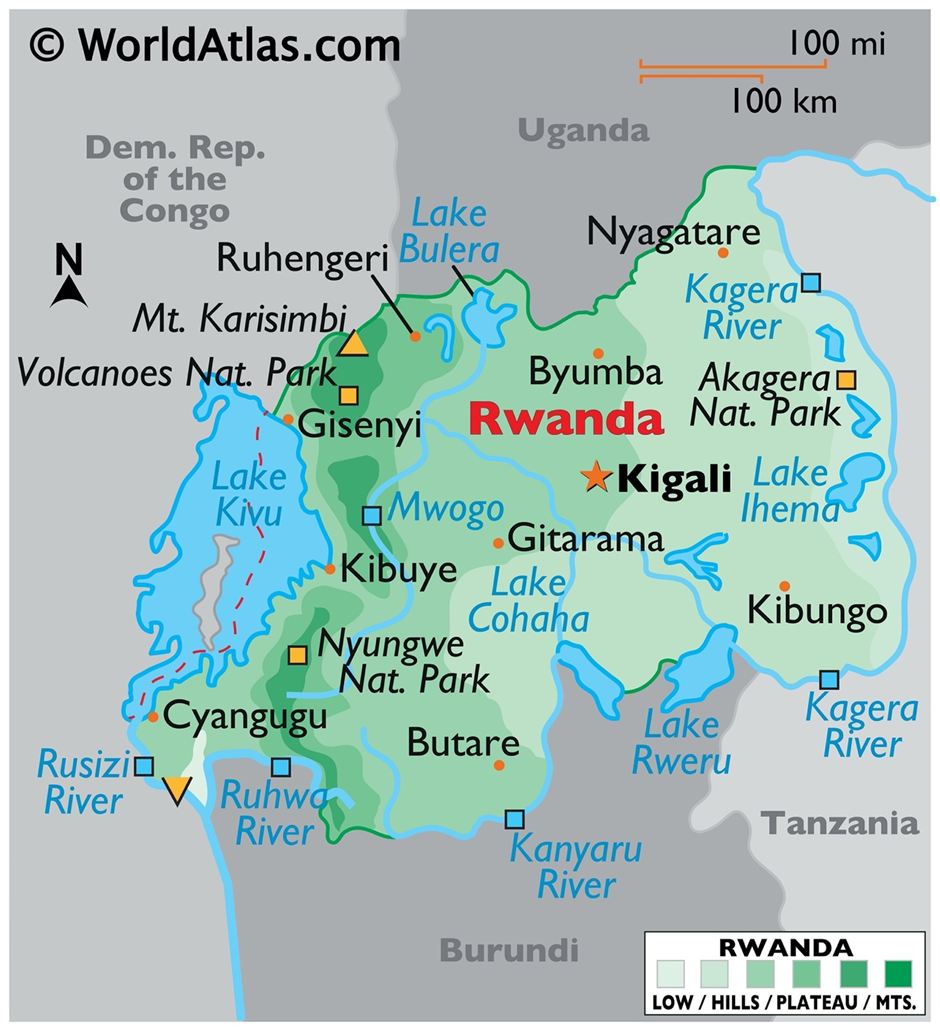
- Rwanda, known as the "Land of a Thousand Hills," is a landlocked country in East Africa. It is bordered by Uganda, Tanzania, Burundi, and the Democratic Republic of Congo (DRC).
- The country’s terrain is characterised by rolling hills, mountains, and numerous lakes, with Lake Kivu being one of the largest. Its temperate climate and high altitudes make it unique in the region.
- The capital city, Kigali, serves as Rwanda's political, economic, and cultural hub. Other notable regions include the Northern Province, home to Volcanoes National Park, famous for mountain gorillas, and the Eastern Province, known for Akagera National Park and rich biodiversity.
- The Western Province, bordering Lake Kivu, is often highlighted for its picturesque landscapes and tourism potential.
About Marburg Virus Disease (MVD) outbreak in Rwanda:
- Rwanda faced its first-ever Marburg Virus Disease (MVD) outbreak in 2024, confirmed on September 27.
- This severe hemorrhagic disease, caused by a filovirus related to Ebola, spreads through contact with bodily fluids or contaminated materials. The outbreak recorded 66 cases and 15 fatalities, with a relatively low fatality rate of 22.7%, setting a benchmark for regional management of such crises.
- The outbreak primarily affected health workers, with 80% of infections occurring in clinical settings.
- Rwandan health authorities, supported by WHO and global partners, implemented measures such as disease surveillance, infection control, contact tracing, and public awareness campaigns. These efforts significantly reduced the spread of the virus.
- The World Health Organisation mobilised resources, including leading filovirus experts and investigational vaccines, to support Rwanda’s response.
- The outbreak officially ended on December 20, 2024, after no new cases were reported for 42 days. WHO continues to aid Rwanda in providing long-term care for MVD survivors and ensuring preparedness for future outbreaks. Rwanda’s success highlights its strong leadership and commitment to safeguarding public health.
Pulicat lake
Why in news?
- The Tamil Nadu State Wetland Authority is taking steps to ring-fence Pulicat Lake, an ecologically sensitive area, to protect it from threats posed by industrial and port expansions.
About Pulicat Lake:
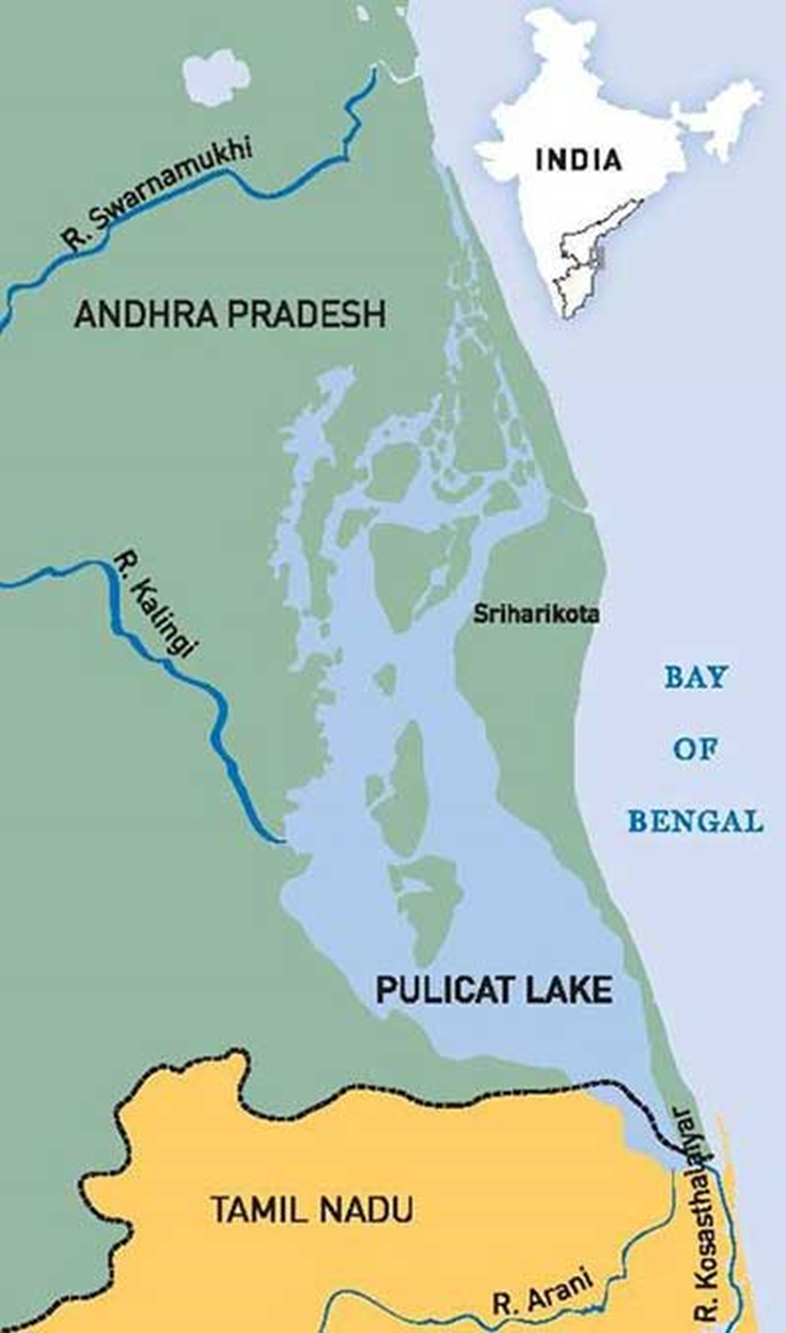
-
- Geography:
- Pulicat Lake, located on the Coromandel Coast of India, straddles the states of Tamil Nadu and Andhra Pradesh. It is the second-largest brackish water lagoon in India, after Chilika Lake.
- The lake covers an area of approximately 759 square kilometres, with its extent varying seasonally depending on rainfall and inflow.
- The lake receives freshwater from streams such as the Kalangi and Arani rivers and is connected to the Bay of Bengal by a narrow opening.
- Its unique brackish ecosystem results from the mixing of seawater and freshwater, creating a dynamic environment that supports diverse life forms.
- Ecological Importance:
- Pulicat Lake plays a crucial role in maintaining ecological balance and supports rich biodiversity. It serves as a vital breeding and feeding ground for numerous species of fish, crustaceans, and molluscs, which sustain local fisheries and livelihoods.
- The lake also supports unique salt-tolerant vegetation, including mangroves and seagrasses, which prevent soil erosion and act as carbon sinks.
- The lake is a significant habitat for migratory birds, including the iconic greater flamingos, painted storks, and pelicans. Every year, thousands of birds arrive during the migratory season, making Pulicat Lake an internationally recognised bird sanctuary.
- Protected areas around the lake include the Pulicat Lake Bird Sanctuary, established to conserve its avian biodiversity. The sanctuary is especially critical for the flamingo population, which gathers here in large numbers, and it forms part of the East Asian-Australasian Flyway for migratory birds.
- Pulicat Lake faces threats from industrial expansion, port activities, pollution, and habitat encroachment, leading to habitat degradation and declining biodiversity. Despite these challenges, conservation efforts led by the Tamil Nadu and Andhra Pradesh governments, along with local communities, aim to preserve this fragile ecosystem.
- Pulicat Lake is not just a geographical landmark but a lifeline for biodiversity and livelihoods. Protecting it ensures the conservation of species, sustenance for communities, and the preservation of its critical role in maintaining regional ecological balance.
Sri Lanka
Why in news?
-
- India will provide ₹2,371 million to Sri Lanka for 33 development projects in the eastern province, focusing on education, health, and agriculture.
About Eastern Province in Sri Lanka:
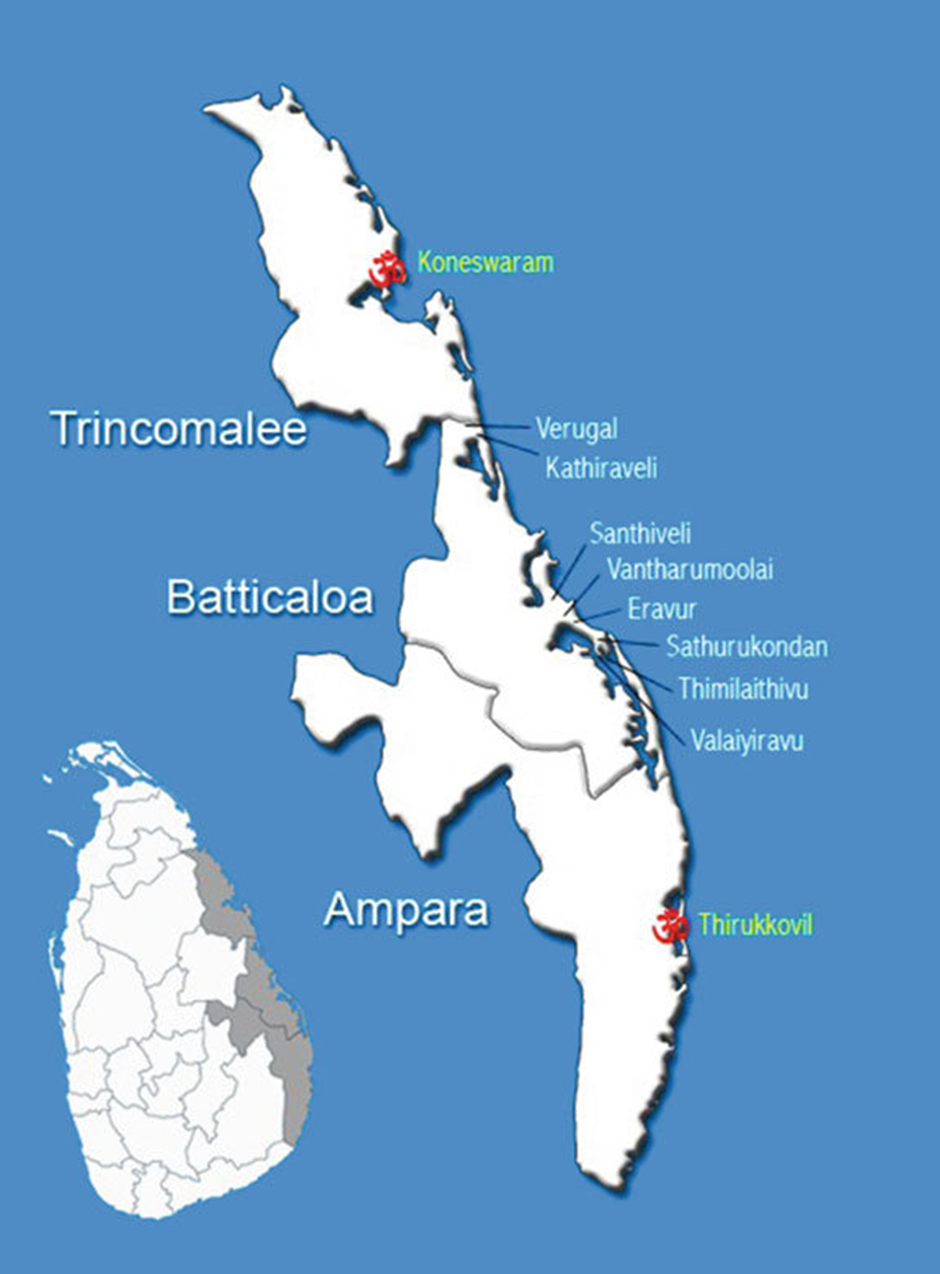
-
- Geography:
- The Eastern Province of Sri Lanka is located along the island's eastern coastline, bordered by the Bay of Bengal to the east. It consists of three districts: Trincomalee, Batticaloa, and Ampara. This region is known for its diverse geography, including coastal plains, lagoons, rivers, and fertile agricultural lands.
- The province is home to Trincomalee Harbour, one of the largest natural deep-water harbours in the world. Its strategic location has made it significant for trade, tourism, and naval activities. The region also features prominent water bodies like the Batticaloa Lagoon and the Gal Oya River, which support agriculture and fisheries.
- The Eastern Province boasts rich biodiversity, with ecosystems ranging from coastal mangroves and coral reefs to inland forests. It houses several protected areas, including Kumana National Park, known for its birdlife, and Lahugala Kitulana National Park, which protects elephants and other wildlife.
- Regional issues:
- Regional issues in the Eastern Province include ethnic tensions, as the population comprises Sinhalese, Tamils, and Muslims, with each community holding distinct cultural and political interests. Historical grievances from the civil war have left lingering divisions and challenges in fostering social cohesion.
- Land disputes are prevalent, stemming from competing claims between communities and the impact of post-war resettlement programs. These disputes often hinder development efforts and disrupt local harmony.
- The province faces economic challenges, including limited industrial growth and over-reliance on agriculture and fisheries. Infrastructure deficits and insufficient investment further constrain progress in the region.
- Frequent occurrences of natural disasters, such as floods, droughts, and cyclones, impact livelihoods and the region’s economy. Climate change has exacerbated these vulnerabilities.
- Efforts to address these issues include targeted development projects, such as India's assistance in education, health, and agriculture, aiming to promote sustainable growth and enhance social harmony in the province.
UPSC CSE PYQQ. Consider the following statements:
Which of the statements given above is/are correct? (2017)
Answer: Option B |
|
Also Read |
|




